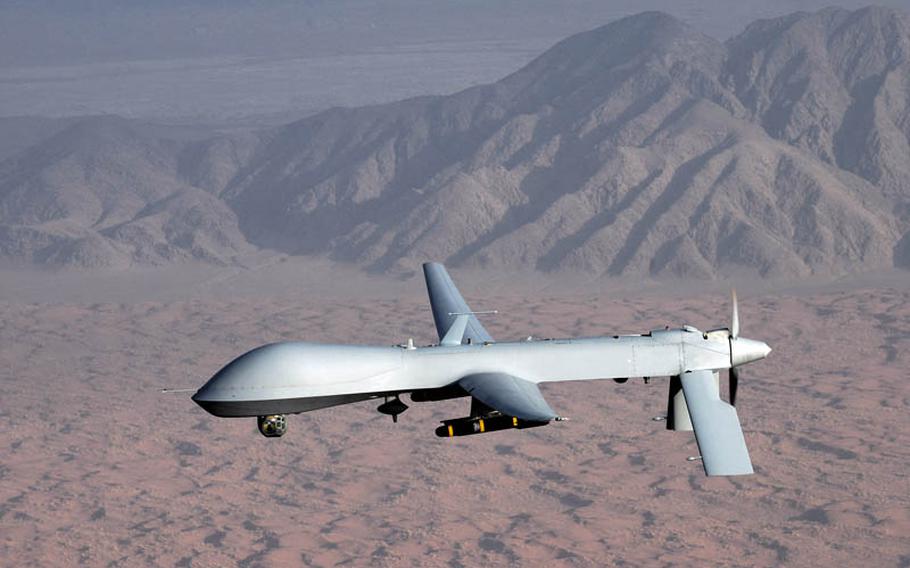
The primary mission of the MQ-1 Predator is interdiction and conducting armed reconnaissance against critical, perishable targets. When the MQ-1 is not actively pursuing its primary mission, it provides reconnaissance, surveillance and target acquisition in support of the Joint Forces commander. (Leslie Pratt/Courtesy U.S. Air Force)
As other nations try to catch up to the U.S. arsenal of some 7,500 drones in the sky, a new story from CNN questions what will happen to the global landscape if other militaries also launched secretive attacks.
Much has changed since 2002, when the U.S. had a monopoly on unmanned military aircraft, and the story uses recent examples of China unveiling over two dozen drone models at an air show and Iran’s claims to having one that can fly to Israel as proof that other countries want access.
Over 70 countries now own some sort of aerial drone capacity, but only a few of those can be used for attacking purposes, according to the report. Only the U.S., United Kingdom and Israel are known to have launched drone strikes.
In addition to the nation-by-nation proliferation of drone technology, for which the story lists examples from the Middle East to Europe, it also notes that even Libyan opposition forces trying to overthrow Moammar Gadhafi bought a sophisticated drone from a Canadian company last year.
Ultimately, the story asks one main question: With no international guidelines for military engagement via unmanned aerial drones, is the world ready for that power to be everywhere?